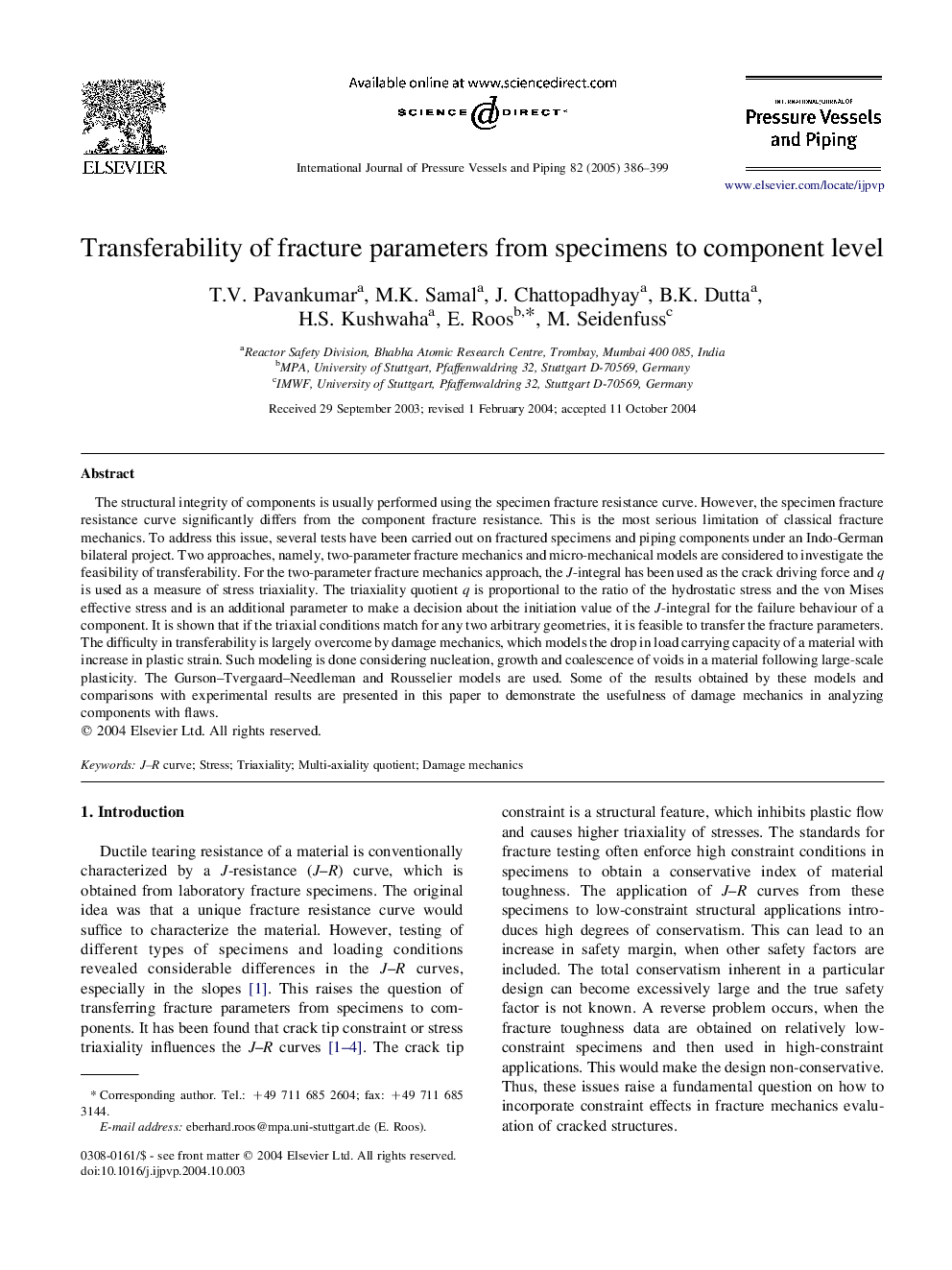| Article ID | Journal | Published Year | Pages | File Type |
|---|---|---|---|---|
| 9707636 | International Journal of Pressure Vessels and Piping | 2005 | 14 Pages |
Abstract
The structural integrity of components is usually performed using the specimen fracture resistance curve. However, the specimen fracture resistance curve significantly differs from the component fracture resistance. This is the most serious limitation of classical fracture mechanics. To address this issue, several tests have been carried out on fractured specimens and piping components under an Indo-German bilateral project. Two approaches, namely, two-parameter fracture mechanics and micro-mechanical models are considered to investigate the feasibility of transferability. For the two-parameter fracture mechanics approach, the J-integral has been used as the crack driving force and q is used as a measure of stress triaxiality. The triaxiality quotient q is proportional to the ratio of the hydrostatic stress and the von Mises effective stress and is an additional parameter to make a decision about the initiation value of the J-integral for the failure behaviour of a component. It is shown that if the triaxial conditions match for any two arbitrary geometries, it is feasible to transfer the fracture parameters. The difficulty in transferability is largely overcome by damage mechanics, which models the drop in load carrying capacity of a material with increase in plastic strain. Such modeling is done considering nucleation, growth and coalescence of voids in a material following large-scale plasticity. The Gurson-Tvergaard-Needleman and Rousselier models are used. Some of the results obtained by these models and comparisons with experimental results are presented in this paper to demonstrate the usefulness of damage mechanics in analyzing components with flaws.
Related Topics
Physical Sciences and Engineering
Engineering
Mechanical Engineering
Authors
T.V. Pavankumar, M.K. Samal, J. Chattopadhyay, B.K. Dutta, H.S. Kushwaha, E. Roos, M. Seidenfuss,
